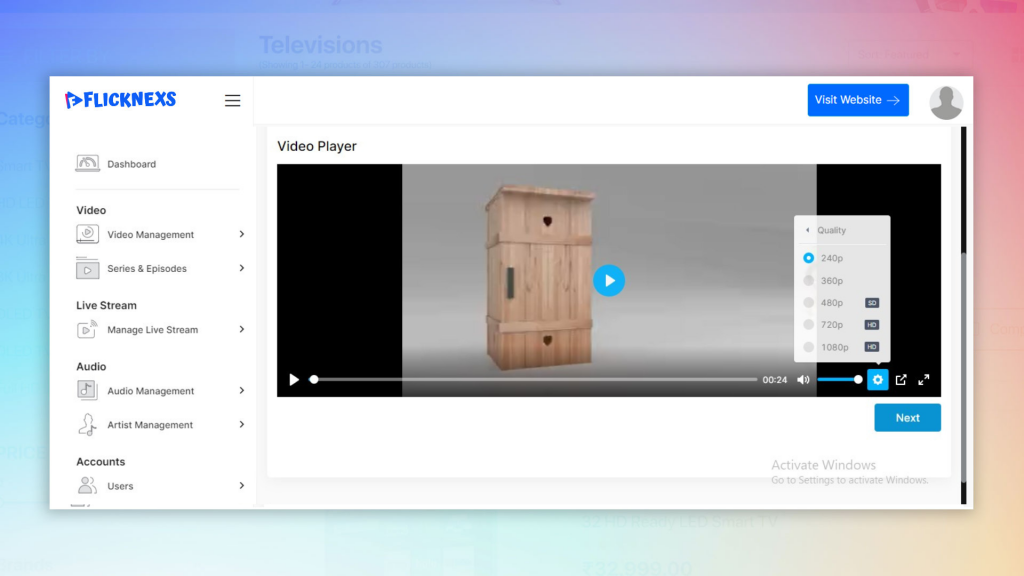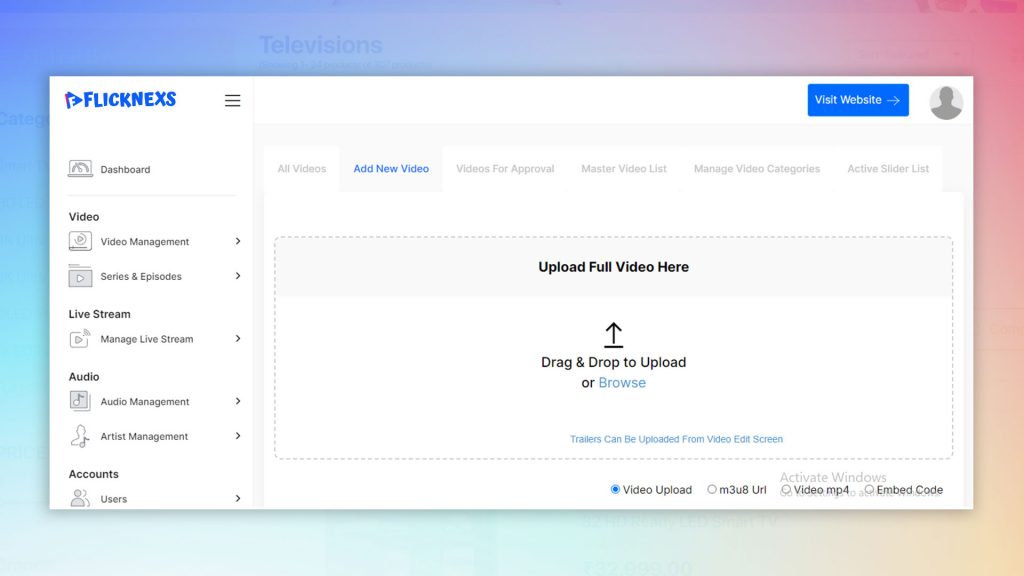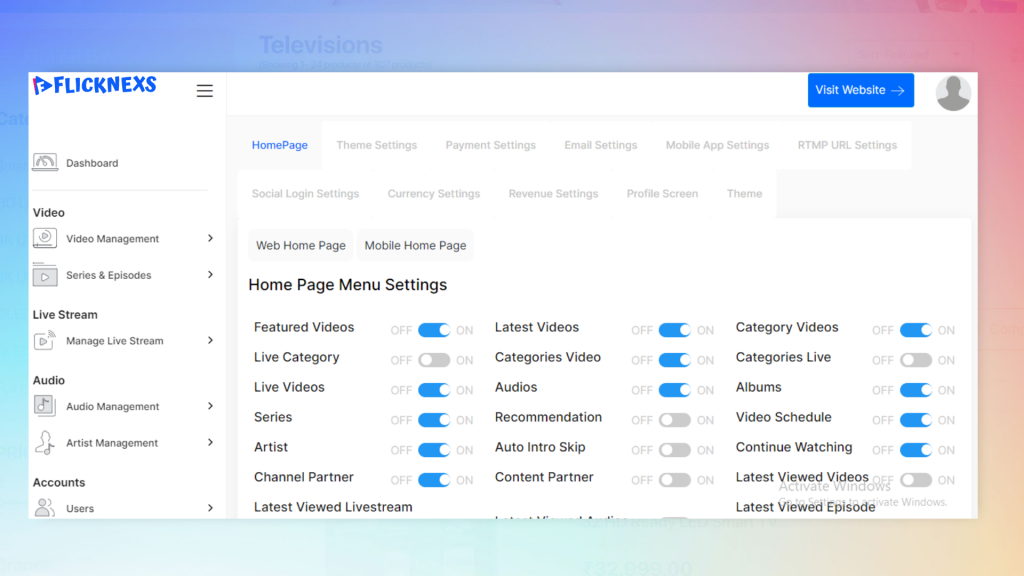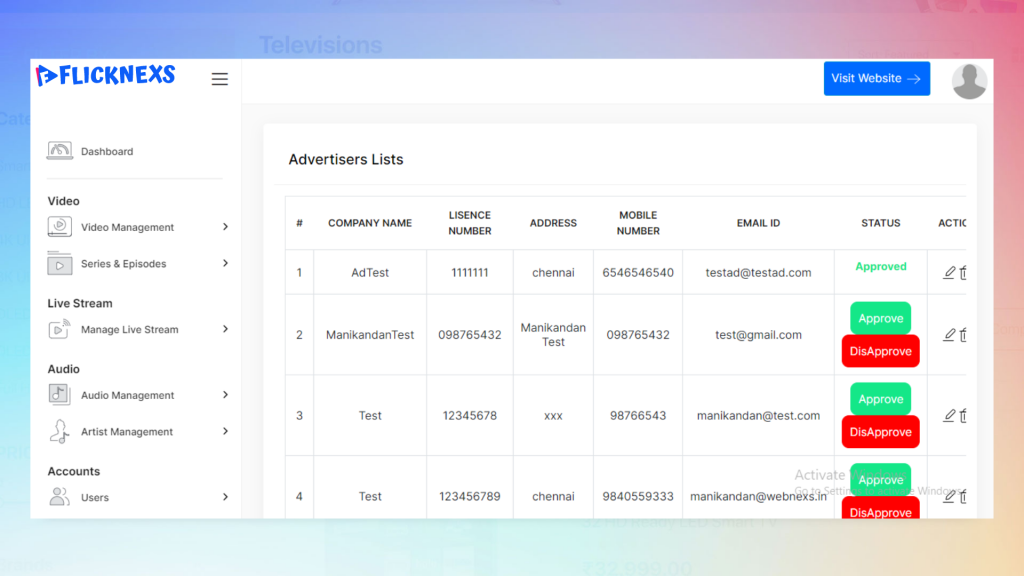video streaming platforms have become a popular mode of entertainment. With the advent of high-speed internet, video streaming has become an integral part of our lives. From watching movies, TV shows, sports events, and live concerts, we can access a plethora of content online. In this ultimate guide, we will explore the world of video streaming platforms, including the most popular platforms, their features, and how to choose the best one for your needs.
Introduction
Video streaming platforms have become an integral part of modern society. They have revolutionized the way we consume media and have provided us with an unparalleled level of convenience and flexibility. This article will delve into the different types of video streaming platforms and their benefits, as well as their brief history and importance in the modern world.
Definition of Video Streaming Platforms
A video streaming platform is a service that allows users to stream and watch video content over the internet. The content can be live or on-demand, and it is delivered to the viewer’s device in real-time, without the need for downloading the content.
Importance of Video Streaming Platforms in the Modern World
Video streaming platforms have become an important part of modern society. They have changed the way we consume media and have given us access to a vast amount of content at our fingertips. These platforms have also made it possible for content creators to reach a global audience, regardless of their location.
Key Benefits of Video Streaming Platforms
There are several key benefits of video streaming platforms, including:
- Convenience:
Users can watch their favorite shows and movies at any time and from anywhere, using their preferred device.
- Flexibility:
Users have the flexibility to pause, rewind, and fast-forward the content, making it easy to consume at their own pace.
- Cost-Effective:
Video streaming platforms are often more cost-effective than traditional cable TV, with a wide range of subscription plans to choose from.
- Personalization:
These platforms use algorithms to suggest content based on users’ viewing history, providing a more personalized experience.
Types of Video Streaming Platforms
There are three main types of video streaming platforms:
Live Streaming Platforms
Live streaming platforms allow users to watch live events, such as sports games and concerts, in real-time. These platforms are popular among sports fans and music lovers who want to watch their favorite events as they happen.
On-demand Streaming Platforms
On-demand streaming platforms allow users to watch content at their convenience. These platforms offer a vast library of movies, TV shows, and documentaries that users can watch anytime, anywhere.
Hybrid Streaming Platforms
Hybrid streaming platforms combine live and on-demand content, providing users with the best of both worlds. These platforms are becoming increasingly popular, as they offer a more comprehensive range of content.
Comparison of Different Types of Video Streaming Platforms
Each type of video streaming platform has its unique features and benefits. Live streaming platforms are ideal for watching live events, while on-demand streaming platforms are perfect for binge-watching your favorite TV shows. Hybrid streaming platforms provide a balance between live and on-demand content, making them ideal for users who want both.
When it comes to cost, on-demand streaming platforms are often more affordable than live streaming platforms, which require a subscription to access live events. Hybrid platforms typically fall somewhere in between. However, the cost will depend on the platform and the subscription plan you choose.
In terms of content, on-demand platforms offer a vast library of movies and TV shows, while live platforms are ideal for watching sports and music events as they happen. Hybrid platforms offer a mix of both.
How to Choose a Video Streaming Platform
With so many video streaming platforms available, it can be overwhelming to choose one. Here are some tips to help you make an informed decision:
Identify your needs and preferences
Before choosing a platform, think about what type of content you want to watch, how often you will use the platform, and what devices you will use to access the platform.
Research different video streaming platforms
Research the different platforms that offer the content you want to watch. Consider the user interface, video quality, and other features that are important to you.
Compare features and pricing
Compare the features and pricing of different platforms to find the one that offers the best value for your needs.
Free trial and cancellation policies
Many platforms offer free trials to new users. Take advantage of these trials to see if the platform meets your needs. Make sure you understand the cancellation policy before signing up.
User reviews and ratings
Read reviews and ratings from other users to get an idea of the user experience on the platform.
Making an informed decision
After considering all of these factors, make an informed decision based on your needs and preferences. Remember, you can always switch to a different platform if you find that the one you chose is not meeting your needs.
Popular Video Streaming Platforms
Flicknexs
Flicknexs is a video streaming platform that offers a wide range of content, including movies, TV shows, documentaries, and more. It was launched in 2020 and has quickly gained a following among viewers who are looking for high-quality content at an affordable price. FlickNexs is available in over 190 countries and offers content in multiple languages.
Webnexs
The Webnexs video streaming platform is an online tool designed for businesses to manage and monetize their video content. It offers customizable features, detailed analytics, and strong security to ensure that businesses can deliver their video content in a way that is both effective and secure. The platform is easy to use and scalable, making it suitable for businesses of all sizes. It also offers a range of integrations with other tools to enhance its functionality.
Netflix
Netflix is one of the most popular on-demand streaming platforms, offering a vast library of movies, TV shows, and original content. With a monthly subscription fee, users can watch as much content as they want, without any ads.
Amazon Prime Video
Amazon Prime Video is another popular on-demand streaming platform, offering a wide range of movies and TV shows, as well as exclusive original content. Users can access Amazon Prime Video with an Amazon Prime subscription.
Hulu
Hulu is a hybrid streaming platform that offers both live and on-demand content. It’s a great option for users who want to watch current TV shows as they air, as well as a large library of on-demand content.
Disney+
Disney+ is a relatively new streaming platform, but it has quickly gained popularity thanks to its large library of Disney, Marvel, and Star Wars content. It’s a great option for families and fans of these franchises.
Features of Video Streaming Platforms
Video streaming platforms have become increasingly popular in recent years. They offer a variety of features that make them appealing to users. In this section, we will discuss some of the key features of video streaming platforms.
User Interface
The user interface of a video streaming platform is important because it affects how easy it is for users to find the content they want to watch. A good user interface should be intuitive, responsive, and easy to navigate. It should also have features like search functionality and personalized recommendations to help users find content that they will enjoy.

Video Quality
Video quality is another important feature of video streaming platforms. Users want to be able to watch videos in high definition and without buffering or lag. Most streaming platforms offer different levels of video quality, ranging from standard definition to 4K ultra-high definition.

Content Library
The content library of a video streaming platform is a crucial feature because it determines what users can watch. The more content a platform has, the more appealing it will be to users. Platforms like Netflix and Amazon Prime Video have a vast library of movies and TV shows, while others like Disney+ focus on specific content like Disney movies and TV shows.

Personalization
Personalization is a key feature of video streaming platforms because it helps users find content that they will enjoy. Platforms use algorithms to analyze a user’s viewing history and make recommendations based on their preferences. This helps users discover new content and keep them engaged with the platform.

Device Compatibility
Device compatibility is important because users want to be able to access their favorite content on any device. Video streaming platforms need to be compatible with a range of devices, including smartphones, tablets, smart TVs, and gaming consoles. Some platforms also offer apps for specific devices, such as Roku or Apple TV.
Social Interaction
Social interaction is a relatively new feature of video streaming platforms. Some platforms allow users to watch videos with friends remotely and discuss them in real-time. This feature is becoming increasingly popular, especially as more people are working from home and socializing online.
Price
Price is an important consideration for many users when choosing a video streaming platform. Most platforms offer different pricing tiers, ranging from basic to premium. Users can choose the plan that best suits their needs and budget.
Unique features of different video streaming platforms
Each video streaming platform has its own unique features that set it apart from the competition. For example, Netflix is known for its original content, while Amazon Prime Video offers free shipping on Amazon purchases. Hulu offers live TV streaming, while Disney+ focuses on family-friendly content.
Video Streaming Platform Business Model
As the popularity of video streaming platforms has increased, so has the variety of business models used by these platforms. Understanding the different models can help consumers make informed decisions about which platform to choose.
Subscription-based model
This model is the most common among video streaming platforms. Users pay a monthly or annual fee to access the platform’s content library. This model allows users to access all the content available on the platform without any additional fees.

Ad-supported model
In this model, the platform is free to use but displays ads to generate revenue. Users may have to watch ads before or during the content they want to watch. This model is typically used by platforms with a large user base, and the revenue generated from ads is used to cover the cost of content and platform maintenance.

Transactional model
This model allows users to rent or purchase individual movies or TV shows. Users pay a one-time fee for access to the content they want to watch. This model is typically used for new or premium content that is not available on other platforms.
Hybrid model
Some platforms use a combination of different models to generate revenue. For example, a platform may offer a subscription-based model but also allow users to purchase premium content.
Pros and cons of different video streaming platform business models
Each business model has its own advantages and disadvantages. Subscription-based models offer unlimited access to content, but users may feel that they are paying for content they are not interested in. Ad-supported models are free to use but may be interrupted by ads. Transactional models offer access to premium content but can be expensive if users want to watch a lot of content. Hybrid models offer a combination of advantages and disadvantages of different models, and users may find this model the most flexible.
Video Streaming Platform Trends and Future Outlook
Impact of COVID-19 pandemic
The COVID-19 pandemic has had a significant impact on the video streaming industry. With people staying at home and practicing social distancing, the demand for online entertainment has skyrocketed. As a result, the number of subscribers to video streaming platforms has increased, and the consumption of online content has gone up.
Growing demand for original content
Original content has become a critical factor in the success of video streaming platforms. With the increasing competition in the market, platforms are investing more in creating their original programming. Users now expect fresh and exclusive content from the platforms they subscribe to. Therefore, it has become crucial for video streaming platforms to offer an extensive and diverse library of original programming to attract and retain their subscribers.
Increased competition and market consolidation
The video streaming industry has become highly competitive in recent years, with several new players entering the market. The emergence of new competitors has led to market consolidation, with established platforms acquiring smaller ones to expand their market share. This trend is expected to continue, with more mergers and acquisitions likely in the future.
Emerging technologies and features
The video streaming industry is continually evolving, with new technologies and features being introduced regularly. For instance, the use of artificial intelligence and machine learning algorithms for content recommendations has become increasingly popular. Moreover, 4K and 8K video resolution and high dynamic range (HDR) content are also gaining popularity among users.
Future prospects and challenges for video streaming platforms
The video streaming industry is expected to continue to grow rapidly, with more people subscribing to online platforms. The use of emerging technologies, such as virtual reality and augmented reality, is also expected to become more prevalent. However, the industry will also face several challenges, such as piracy, the increasing cost of content production, and the need to compete with traditional cable and satellite television providers.
Conclusion
In conclusion, video streaming platforms have revolutionized the way we consume entertainment and have become an integral part of our daily lives. The convenience, affordability, and variety of content offered by these platforms have made them immensely popular among consumers worldwide. The different types of streaming platforms, business models, and features provide users with a wide range of options to choose from, based on their preferences and budget. However, with the increasing competition and changing consumer preferences, it is essential for streaming platforms to keep innovating and adapting to stay ahead of the curve. As technology continues to evolve, we can expect to see more advanced features and emerging trends in the streaming industry. In summary, video streaming platforms are here to stay, and their future looks bright.



Leave a Reply